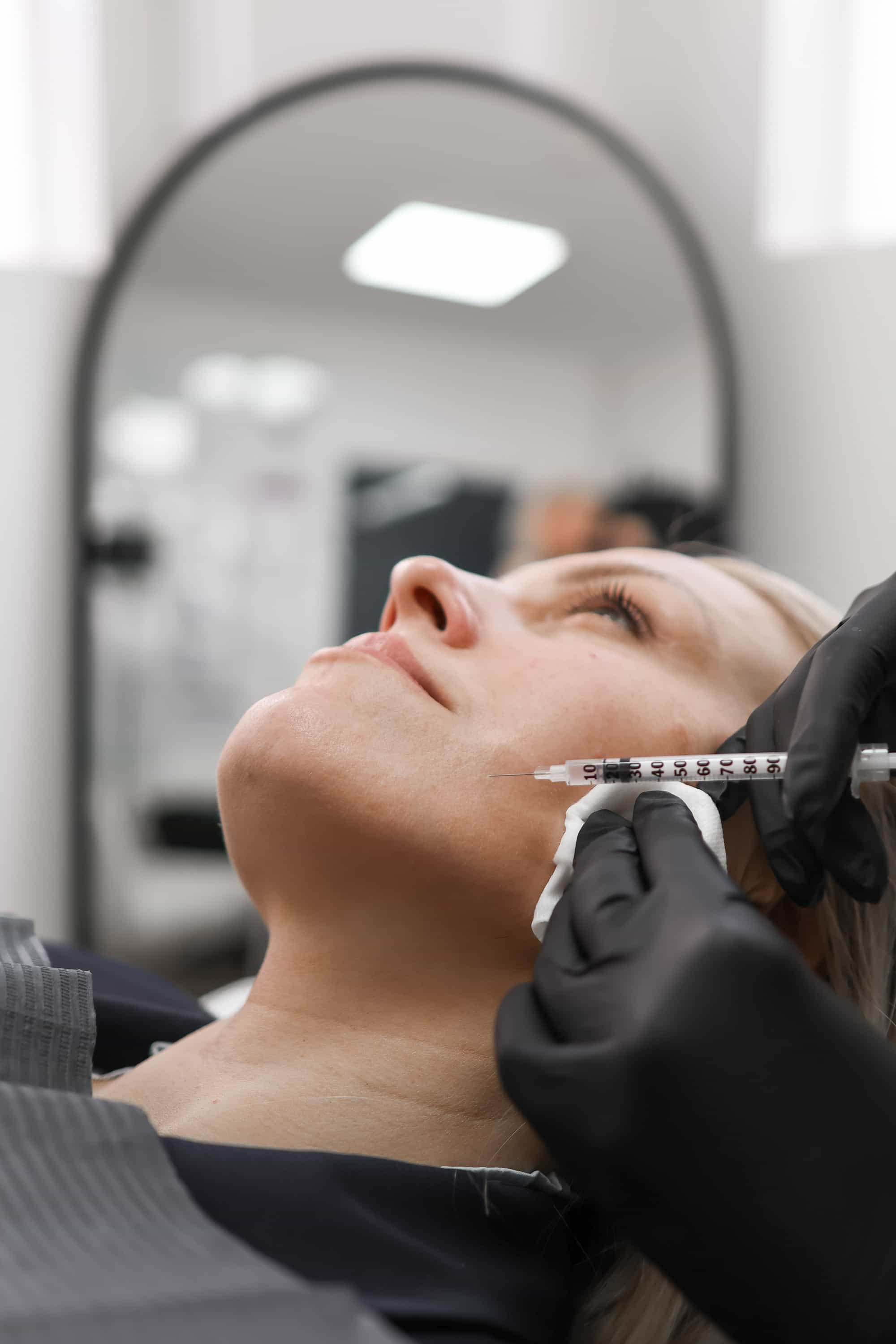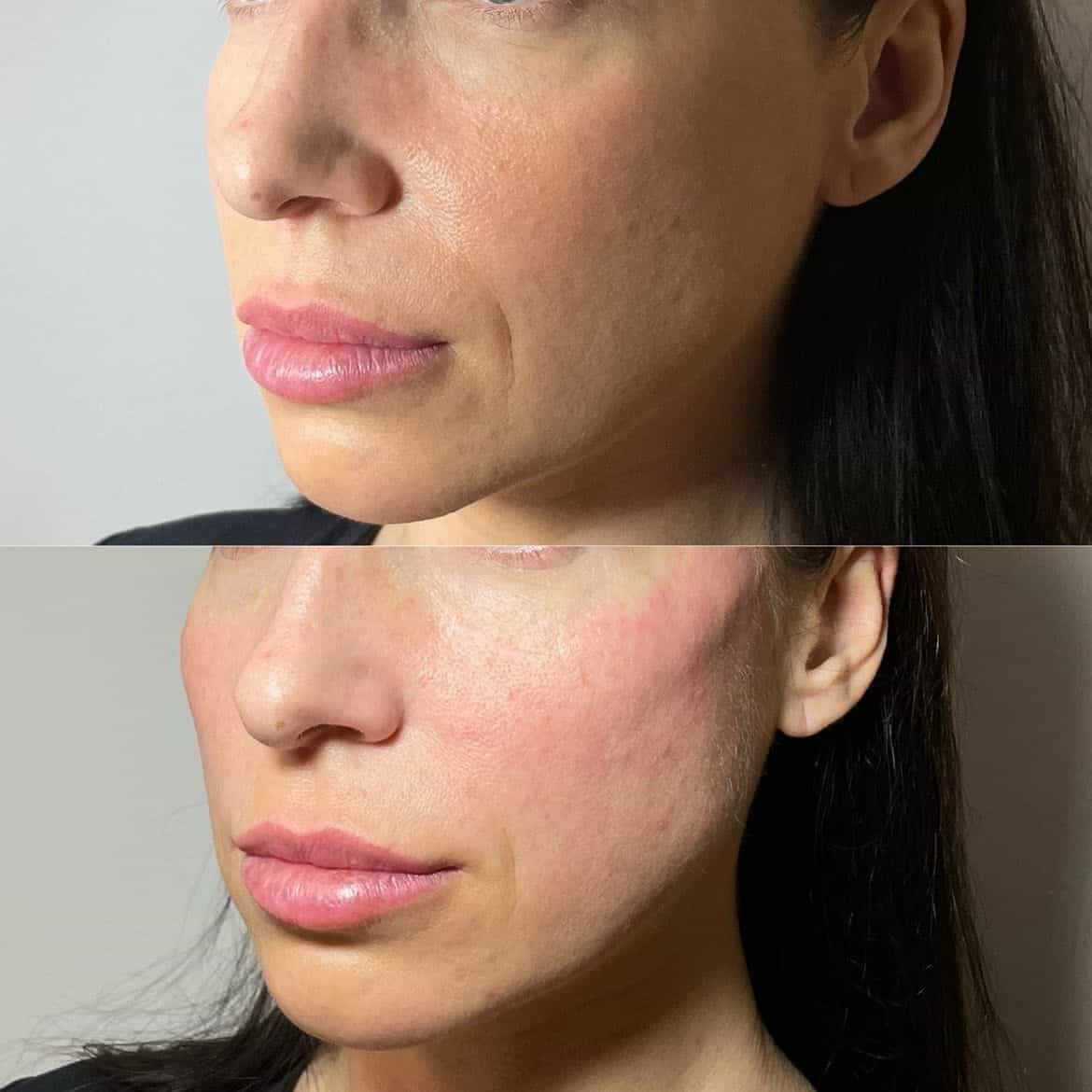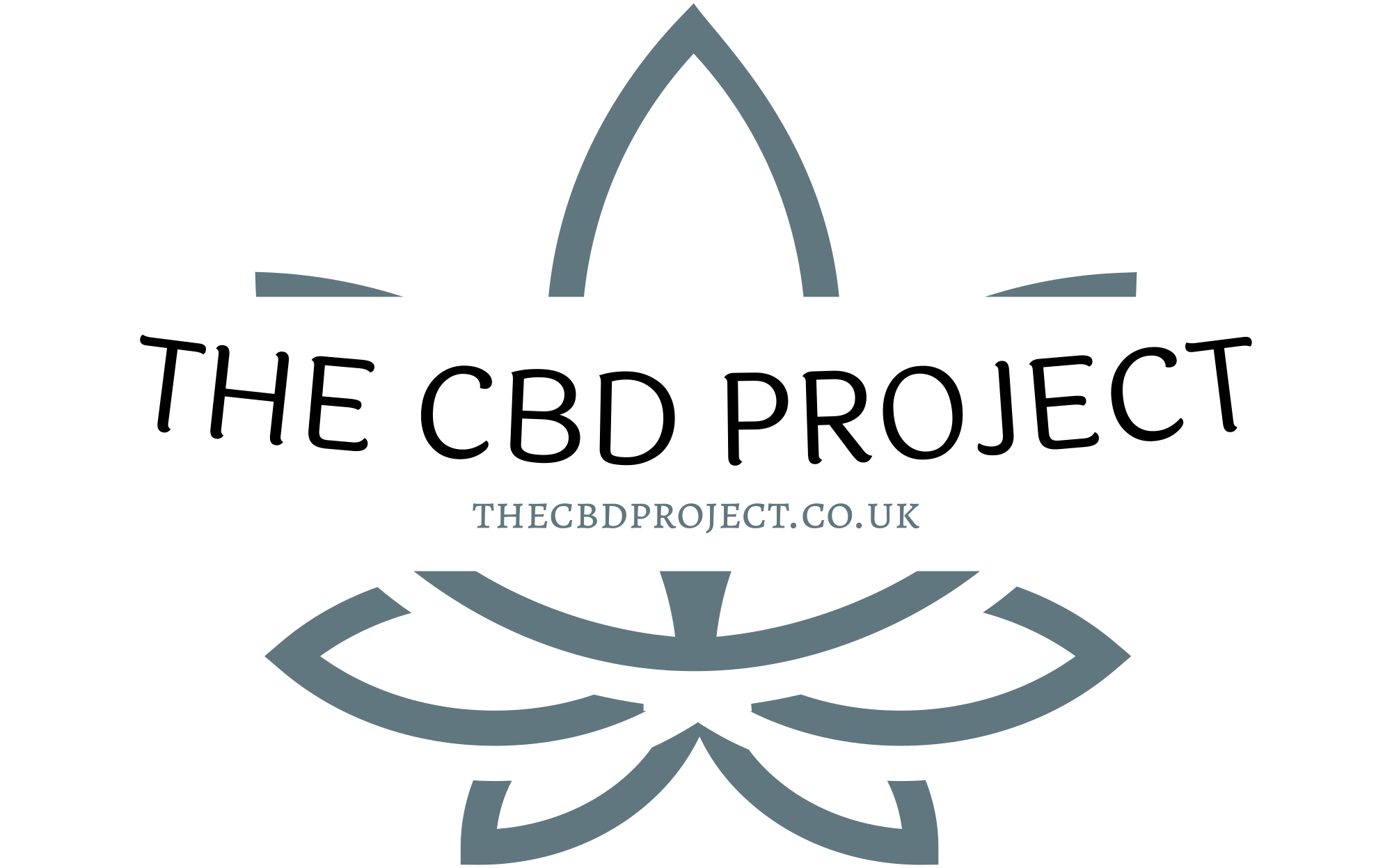Understanding Downturned Smiles
A downturned smile, characterized by the corners of the mouth pointing downwards, can impact self-confidence and create an impression of sadness or disapproval, even when not intended. This subtle facial expression can be caused by various factors, including genetics, muscle imbalances, or habitual frowning. Understanding the underlying causes and potential solutions for addressing a downturned smile is crucial for individuals seeking to enhance their appearance and emotional well-being.
Causes of Downturned Smiles
Genetics play a significant role in determining facial structure, which includes the shape of the mouth and the position of the corners when smiling. Individuals may inherit genes that predispose them to a more downturned smile.
Muscle imbalances can also contribute to downturned smiles. The muscles around the mouth, such as the depressor anguli oris, are responsible for pulling the corners of the mouth downwards. If these muscles are overly developed or tight compared to the muscles that lift the corners of the mouth (like the zygomaticus major), a downturned smile may result.
Habitual frowning is another common cause. Frequently frowning can lead to muscle memory, making it harder to achieve an upward curve when smiling. This pattern becomes ingrained over time, contributing to a more pronounced downturn.
Impact on Appearance and Confidence
Understanding the causes of a downturned smile is essential for finding appropriate solutions. Genetics can influence facial structure, leading to a predisposition towards a downturned smile. Muscle imbalances in the face, with stronger muscles pulling the corners of the mouth down compared to those lifting them, can also contribute. Finally, habitual frowning, which strengthens the downward-pulling muscles and creates muscle memory, can lead to a more pronounced downturned smile over time.
How Botox Can Help Lift a Downturned Smile
A downturned smile, where the corners of the mouth point downwards, can affect self-esteem and project an unintentional air of sadness or disapproval. This subtle facial expression arises from various factors, including genetics, muscle imbalances, and habitual frowning.
Target Muscles for Treatment

Botox injections can be an effective treatment for lifting a downturned smile by targeting specific muscles responsible for pulling the corners of the mouth downwards.
The primary muscle involved is the depressor anguli oris, which runs from the corner of the mouth to the chin bone. Botox temporarily paralyzes this muscle, reducing its ability to contract and pull the mouth down.
By weakening the depressor anguli oris, Botox allows the opposing muscles responsible for lifting the corners of the mouth, such as the zygomaticus major, to function more effectively. This results in a more upward curve to the smile, creating a lifted appearance.
Mechanism of Action: Relaxing Facial Muscles
Botox injections work by temporarily paralyzing specific facial muscles. In the case of a downturned smile, Botox is injected into the depressor anguli oris muscle, which pulls the corners of the mouth downwards.
When this muscle is paralyzed, its ability to contract and pull the mouth down is reduced. This allows the opposing muscles responsible for lifting the corners of the mouth, such as the zygomaticus major, to function more effectively.
The result is a more upward curve to the smile, giving the appearance of a lifted and more cheerful expression.
The Lifting Effect and Its Duration
Botox injections can be an effective treatment for lifting a downturned smile. Botox works by temporarily paralyzing specific facial muscles. In the case of a downturned smile, Botox is injected into the depressor anguli oris muscle, which pulls the corners of the mouth downwards.
- When this muscle is paralyzed, its ability to contract and pull the mouth down is reduced.
- This allows the opposing muscles responsible for lifting the corners of the mouth, such as the zygomaticus major, to function more effectively.
The result is a more upward curve to the smile, giving the appearance of a lifted and more cheerful expression.
The lifting effect typically lasts for 3 to 6 months. As the Botox wears off, the depressor anguli oris muscle regains its strength, and the downturned smile may return.
Repeat injections are required to maintain the lifted appearance.
Benefits of Botox for Downturned Smiles
A downturned smile, characterized by the corners of the mouth pointing downwards, can affect self-confidence and project an unintentional air of sadness or disapproval. Botox injections offer a non-surgical solution to lift this type of smile and achieve a more cheerful expression.
Improved Aesthetics and Symmetry
A downturned smile, characterized by the corners of the mouth pointing downwards, can impact self-confidence and create an impression of sadness or disapproval, even when not intended. This subtle facial expression can be caused by various factors, including genetics, muscle imbalances, or habitual frowning. Understanding the underlying causes and potential solutions for addressing a downturned smile is crucial for individuals seeking to enhance their appearance and emotional well-being.
Botox injections can be an effective treatment for lifting a downturned smile by targeting specific muscles responsible for pulling the corners of the mouth downwards.
- The primary muscle involved is the depressor anguli oris, which runs from the corner of the mouth to the chin bone. Botox temporarily paralyzes this muscle, reducing its ability to contract and pull the mouth down.
- By weakening the depressor anguli oris, Botox allows the opposing muscles responsible for lifting the corners of the mouth, such as the zygomaticus major, to function more effectively. This results in a more upward curve to the smile, creating a lifted appearance.
The lifting effect typically lasts for 3 to 6 months. As the Botox wears off, the depressor anguli oris muscle regains its strength, and the downturned smile may return. Repeat injections are required to maintain the lifted appearance.
Increased Self-Esteem and Confidence
Botox injections can be an effective treatment for lifting a downturned smile, resulting in increased self-esteem and confidence.
- By temporarily paralyzing the depressor anguli oris muscle, Botox reduces the downward pull on the corners of the mouth.
- This allows the opposing muscles responsible for lifting the corners of the mouth to function more effectively, creating a more upward curve to the smile.
The improved appearance of a lifted smile can have a positive impact on self-image and confidence. Feeling good about one’s appearance can lead to increased self-esteem, assertiveness, and social interactions.
Procedure and Considerations
Botox injections offer a non-surgical approach to address a downturned smile, a facial expression characterized by the corners of the mouth pointing downwards. This condition can impact self-confidence and project an unintentional impression of sadness or disapproval.
Consultation with a Qualified Practitioner
Consultation with a qualified practitioner is essential before considering Botox injections for lifting a downturned smile. A board-certified dermatologist, plastic surgeon, or otolaryngologist (ENT doctor) will assess your individual facial structure, muscle imbalances, and medical history to determine if Botox is an appropriate treatment option. They will also discuss potential risks and benefits, as well as realistic expectations for the results.
During the consultation, be prepared to discuss your concerns, desired outcome, and any previous treatments you have undergone. Bring photographs of yourself smiling so the practitioner can evaluate the severity of the downturned smile. It’s also important to ask questions about the procedure, including injection sites, recovery time, and potential side effects.
A thorough consultation allows for a personalized treatment plan tailored to your specific needs and goals. It ensures that you understand the procedure, risks, and potential outcomes before making a decision.
Treatment Process and Expected Downtime
Procedure and Considerations:

Botox is injected into the depressor anguli oris muscle, which pulls the corners of the mouth downwards.

The dosage and injection points are determined by a qualified practitioner based on individual needs and facial structure.
Considerations include any allergies, existing medical conditions, and current medications, as they may influence the suitability of treatment.
Treatment Process:
The procedure typically takes 10-15 minutes and is performed in a clinical setting. It involves minimal discomfort, often described as a slight pinching sensation.
Expected Downtime:
Minimal downtime is required after Botox treatment. Some mild swelling or bruising may occur at the injection sites but typically subsides within a few days.
Patients can resume normal activities immediately following the procedure.
It’s recommended to avoid rubbing or massaging the treated area for several hours to prevent the spread of the Botox.
Potential Side Effects and Risks
Botox injections can be an effective treatment for lifting a downturned smile by targeting specific muscles responsible for pulling the corners of the mouth downwards.
- The primary muscle involved is the depressor anguli oris, which runs from the corner of the mouth to the chin bone. Botox temporarily paralyzes this muscle, reducing its ability to contract and pull the mouth down.
- By weakening the depressor anguli oris, Botox allows the opposing muscles responsible for lifting the corners of the mouth, such as the zygomaticus major, to function more effectively. This results in a more upward curve to the smile, creating a lifted appearance.
The lifting effect typically lasts for 3 to 6 months. As the Botox wears off, the depressor anguli oris muscle regains its strength, and the downturned smile may return. Repeat injections are required to maintain the lifted appearance.
Potential Side Effects and Risks:
Like any medical procedure, Botox injections carry potential side effects and risks, although they are generally mild and temporary. These can include:
- Bruising or swelling at the injection site.
- Headache.
- Pain or discomfort around the injected area.
- Drooping eyelids or eyebrows (rare).
- Asymmetry of facial expression (rare).
It’s important to discuss your medical history and any existing conditions with a qualified practitioner before receiving Botox injections. Certain medical conditions or medications may increase the risk of side effects.
Alternatives to Botox
There are several alternatives to Botox for addressing a downturned smile. These include facial exercises, massage techniques, fillers, and even surgical interventions. Facial exercises can help strengthen muscles responsible for lifting the corners of the mouth, while massage can improve circulation and reduce muscle tension. Fillers, such as hyaluronic acid injections, can add volume to the area around the lips, creating a more lifted appearance. Surgery options include facelifts or muscle transfers. It’s important to consult with a qualified healthcare professional to determine the most suitable alternative for your individual needs and circumstances.
Other Facial Fillers and Injections
Botox injections offer an effective way to lift a downturned smile by targeting specific muscles responsible for pulling the corners of the mouth downwards. However, there are several alternatives available if Botox isn’t the right choice for you.
Facial exercises can help strengthen the muscles that naturally lift the corners of the mouth, gradually improving the appearance of a downturned smile. Regular facial massages can also improve blood circulation and reduce muscle tension, potentially making a subtle difference in facial expression.
Dermal fillers, such as hyaluronic acid, are another option. These injections add volume to specific areas of the face, which can help plump up the lips and create a more lifted appearance around the mouth.
For individuals seeking more dramatic results or those with severe muscle imbalances contributing to the downturned smile, surgical interventions may be considered. Facelifts aim to tighten the skin and underlying tissues in the lower face, potentially lifting the corners of the mouth. Muscle transfers involve moving muscles from another area of the body to the area around the mouth, providing a more permanent solution for correcting facial drooping.
It’s crucial to consult with a qualified healthcare professional, such as a dermatologist, plastic surgeon, or otolaryngologist (ENT doctor), to determine the most suitable treatment option based on your individual needs and goals. They can assess your facial structure, muscle imbalances, and medical history to guide you towards the best approach for achieving a more lifted and confident smile.
Non-Invasive Treatments like Thread Lifting
While Botox is a popular choice for lifting a downturned smile, there are several non-invasive alternatives worth exploring.
Thread Lifting is one such option. This technique involves inserting dissolvable threads made of polydioxanone (PDO) beneath the skin. These threads are strategically placed to lift and support sagging tissues around the mouth, creating a more upward curve to the smile.
Unlike Botox, which works by temporarily paralyzing muscles, thread lifting provides long-lasting structural support.
Get expert care for your downturned smile from Dr. Laura Geige at It’s Me & You Clinic.
- THC Seltzer Vs Cannabis Soda: Which Is Better? - November 3, 2025
- Skin Resurfacing With Injectables In Morden, Surrey - October 31, 2025
- Skin Bio-Remodelling With Profhilo In Shere, Surrey - October 28, 2025
